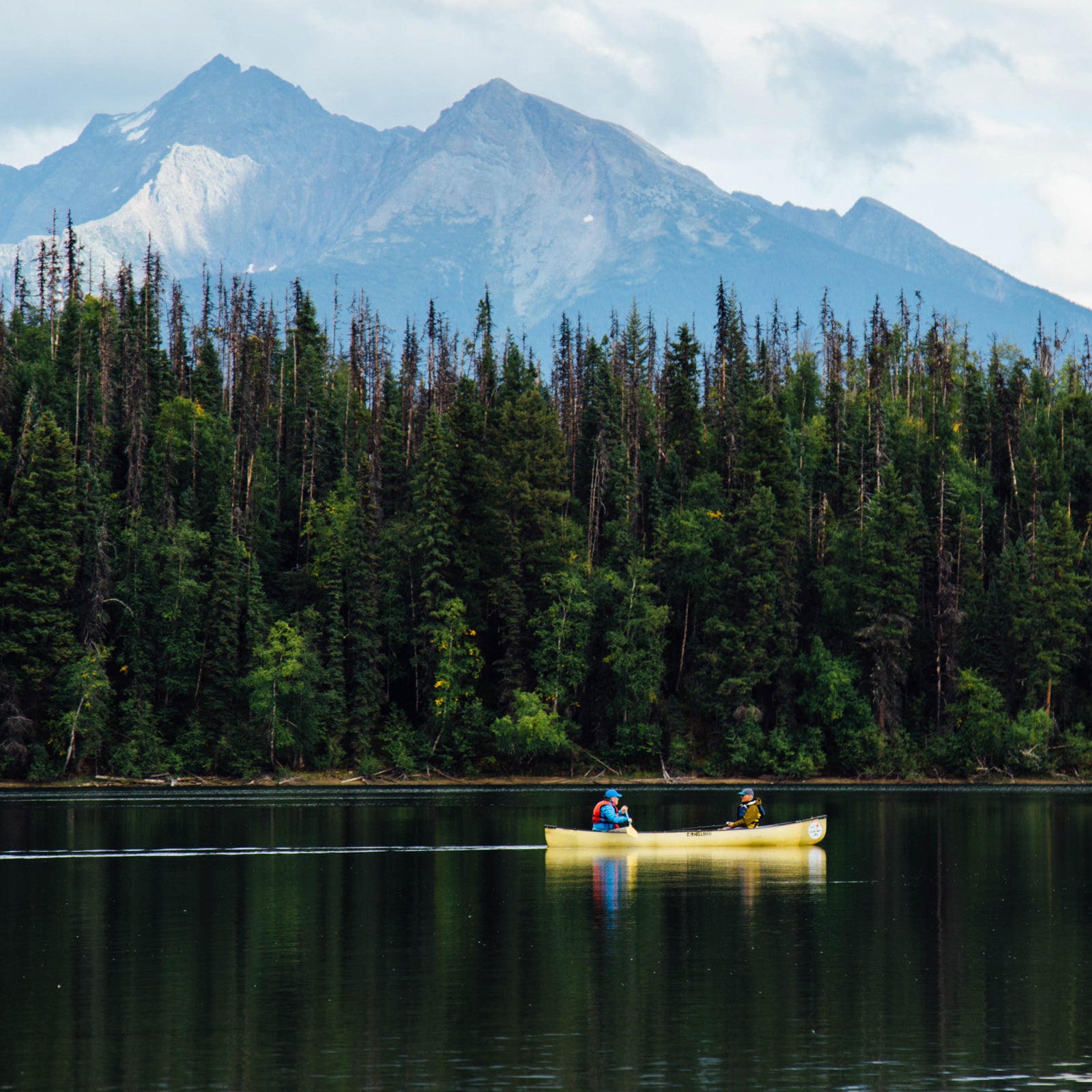You may think that a flatwater canoe trip is the car camping of backcountry boating. After all, theyÔÇÖre so… accessible. Pretty much everyone has paddled a canoe once or twice. What could be simpler than loading one up with a tent, seven backpacks, and a few coolers, paddling over to a nearby island, and lighting a really big fire? There are worse ways to spend a weekend.
But itÔÇÖs also possible to approach a canoe trip more like a backpacking journey, covering ground as efficiently as possible in order to penetrate the deep wilderness. For reasons that IÔÇÖve never quite managed to fathom, thatÔÇÖs the way I like to do it, and thatÔÇÖs what this column╠²is about: 100 percent pure opinion, unadulterated by objective facts or evidence, on╠²how to run a canoe trip if youÔÇÖre the kind of person whose ideal vacation involves avoiding crowds, seeking robust but not gratuitous physical challenges, and╠²optimizing the details (i.e., the typical Sweat Science reader, as far as I can tell).
Most of my canoe travel has been in the rock-and-pine Canadian Shield terrain of my home province of Ontario. The landscape is pretty similar to what youÔÇÖd find in MinnesotaÔÇÖs Boundary Waters Canoe Area Wilderness: more lakes and portages than rivers and rapids. So the advice below isnÔÇÖt about whitewater trips or truly remote exploration; itÔÇÖs about optimizing your experience in relatively accessible wilderness canoe areas. And to a large degree, that means getting the portages, where you haul your boat and gear around rapids or between two lakes, right. Here are the key steps.
Tackle the Toughest Portages
ItÔÇÖs amazing how small a barrier it takes to filter out the crowds. Even with car camping, IÔÇÖve found that sites with, say, a quarter-mile walk-in tend to be dramatically less crowded╠²than ones you can drive up to. The same applies in the backcountry, though on a different scale. On the map, look for areas that can only be accessed via a significant portage, ideally a mile╠²or more. ThatÔÇÖs where youÔÇÖll find solitude.
Last year, I took a mid-August trip with three friends to , one of the most popular canoe areas in the world, just a few hours from Toronto, a city of three╠²million at the heart of a larger urban area of about nine╠²million, at the absolute peak of its high season. We╠²only had four nights to get away, which meant we couldnÔÇÖt simply outdistance the crowds. The solution: a 3.3-mile portage (5,305 meters)╠²between Bonfield and Dickson Lakes, one of the longest in the park. We didnÔÇÖt merely accept the mega portage as a necessary evil; we planned our whole trip around getting to it. In doing so, we put a more or less insurmountable barrier between us and pretty much everyone else. We didnÔÇÖt see another soul for three of the days.
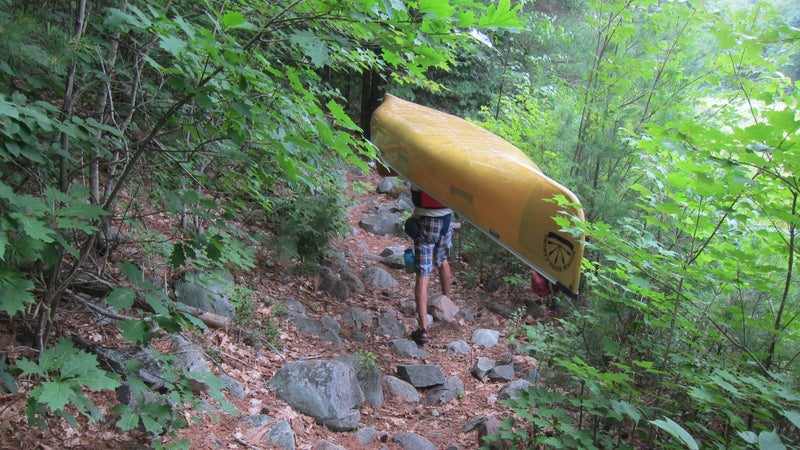
Go Three to a Canoe
HereÔÇÖs where things get controversial. Almost no one I know trips╠²with three people╠²to a canoe. ItÔÇÖs definitely not the way to go for whitewater, and even on flatwater it requires a slightly larger boat than the usual tandem craft. But if youÔÇÖre going to follow rule number one and seek out tough portages, having three to a canoe can be a huge advantage. Hear me out.
In my experience, if you pack light, you can fit everything you need for three people into two big,╠²roughly╠²100-liter portage packs. ╠²($250)╠²are a good call for keeping clothes and sleeping bags safe, while╠²╠²($137 and up)╠²or even cheap options like the ╠²($81)╠²are fine for food (more on that below).╠²This means that on portages, two people each grab a bag and some paddles,╠²and the third person hoists the canoe. Nobody has to double back for an extra load (which is a complete nonstarter if you want to cover ground quickly), and nobody has to carry a pack and a canoe at the same time (which is feasible but not a lot of fun, particularly if youÔÇÖre a wiryÔÇöOK,╠²scrawnyÔÇöendurance athlete like me). If you go two to a canoe, youÔÇÖll be picking from one of those lesser╠²options.
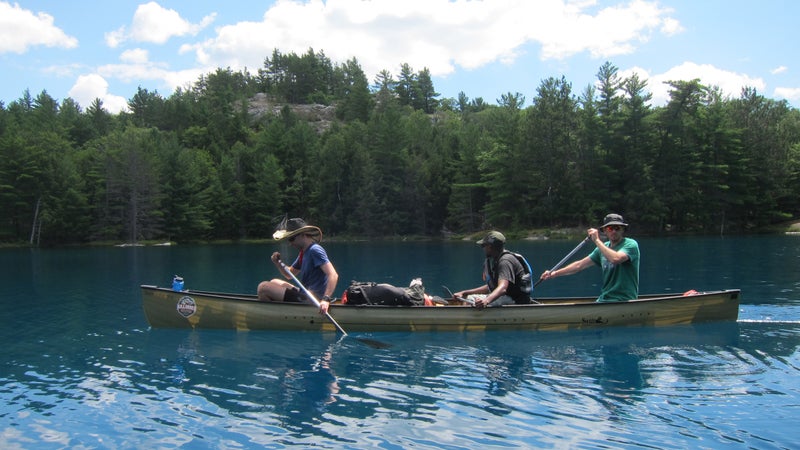
As an added bonus, with three decent paddlers in a boat, you can absolutely fly across the water. And just as importantly, if one paddler is weak or inexperienced, itÔÇÖs less of a problem than with just two paddlers.
For the trip I did this summer in , also in Ontario, we had six adults in two rented canoes. The ultralight Kevlar models we used, ╠²($3,145) and ╠²($3,595), were 18.5 feet long, with three comfortable seats and plenty of room for two big packs, and weighed 48 pounds. ThatÔÇÖs about nine pounds heavier than the 16-footers we would have rented for two people╠²but still way lighter than most canoes you come across.
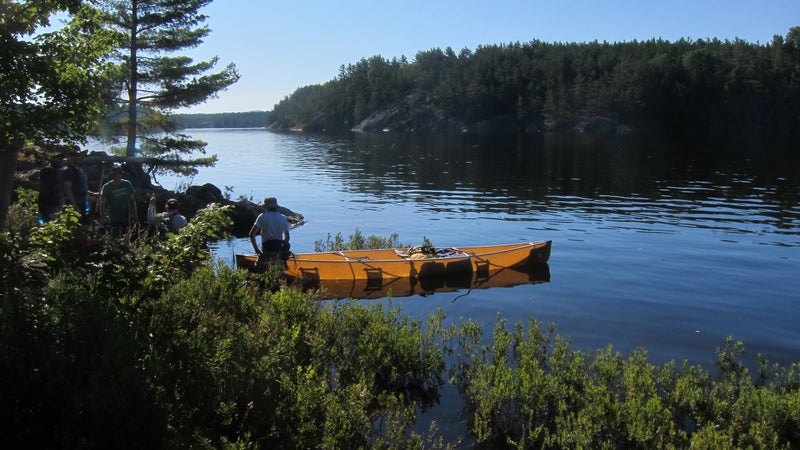
DonÔÇÖt Let Your Bags Touch the Ground
HereÔÇÖs the platonic ideal of the portage: as you drift toward the landing, everyone stows loose gear, clips on water bottles, and so on. The moment╠²you land, two paddlers hop out, hoist the two packs and paddles, and hit the trail. The remaining paddler then hoists the canoe and follows. At the other end, the person carrying the canoe walks right into the water and sets it down, so the two pack carriers can lay their packs right into the boat. Everyone hops in, and youÔÇÖre back on the water, at which point itÔÇÖs a good (and less buggy)╠²time to snack.
Most of the time, portages will not (and probably should not) work out exactly like this. Sometimes you need a snack before the portage. Sometimes you need to pee. Sometimes thereÔÇÖs great scenery or wildlife you want to check out. SometimesÔÇöif youÔÇÖre embarking on a three-mile haul, sayÔÇöyou need a break or a change of shoes. And IÔÇÖm all in favor of short breaks and load switches as needed during portages,╠²as long as theyÔÇÖre done deliberately.
Otherwise, itÔÇÖs really, really easy to spend 10 or 15 minutes milling around at the start and finish of every portage, and there are two problems with this. One:╠²even if you only have a half dozen portages in a given day, youÔÇÖre still spending a couple of hours unloading and reloading. Two:╠²this is low-quality, unintentional time. Often the start and finish of portages happen in╠²dank, mosquito-infested wetlands that no one╠²enjoys. So you want to aim by default for the perfect portage in order to minimize wasted time, then deviate from it deliberately only when hunger or scenery or whatever calls for it.
And itÔÇÖs not just about time. Picking up and putting down canoes and heavy packs are╠²the hardest parts of the portage. Why lift and deposit everything three or four times when you can do it once?
Pack Your Food in Empty Olive Tubs
To be totally honest, all that stuff youÔÇÖve just read was merely a preamble for my most important and mind-blowing piece of advice. I initially pitched my editor an article entirely about olive tubs, but she (rightly) figured it might be a little too niche.╠²Buckle up.
A little over a decade ago, I started going on trips organized by a friend of a friend named Mike Wilson. Mike is a consummate organizer, and I emulate a whole bunch of elements from his playbook. But the single most important innovation heÔÇÖs come╠²up with is to pack food in empty ╠²from a Greek deli. The tubs are made of a strong, lightweight plastic, much like the╠²╠²you get from outfitters, only smaller. TheyÔÇÖre waterproof, which makes them good for whitewater trips, too. And hereÔÇÖs the part that proves the cosmos intends canoeists to use olive tubs: four of them, stacked two by two, fit perfectly in a standard,╠²roughly╠²100-plus-liter portage pack. There is absolutely no wasted space. It was meant to be.
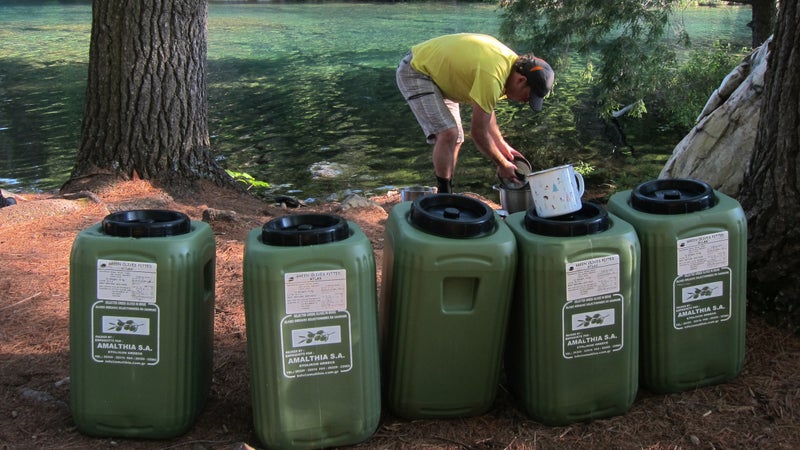
MikeÔÇÖs method for packing four tubs, which can easily fit food for three people for a week, is to label them B (for breakfast), L (for lunch), D (for dinner), and S (for snacks). ThereÔÇÖs some flexibility, of course. If youÔÇÖre packing light, you can fit a stove,╠²fuel, and some other gear in one of the tubs, especially once youÔÇÖve eaten a bit╠²of the food. And by the end of a trip, one╠²tub╠²will likely be reserved for garbage. For this yearÔÇÖs trip, with six people for five nights, I took six tubs, with the upper half of the second food pack reserved for bulkier equipment, like a big cooking pot.
I love that everything isnÔÇÖt just thrown in willy-nilly. ItÔÇÖs╠²easier to find what youÔÇÖre looking for when you only have to hunt through one olive tub. I no longer have to worry about squashing softer foods. I also donÔÇÖt worry about rodents gnawing through a pack to get at food at more heavily traveled campsites. And once theyÔÇÖre in that portage pack, the tubs are way more comfortable to carry than food barrels or a soft pack with everything tossed in haphazardly.
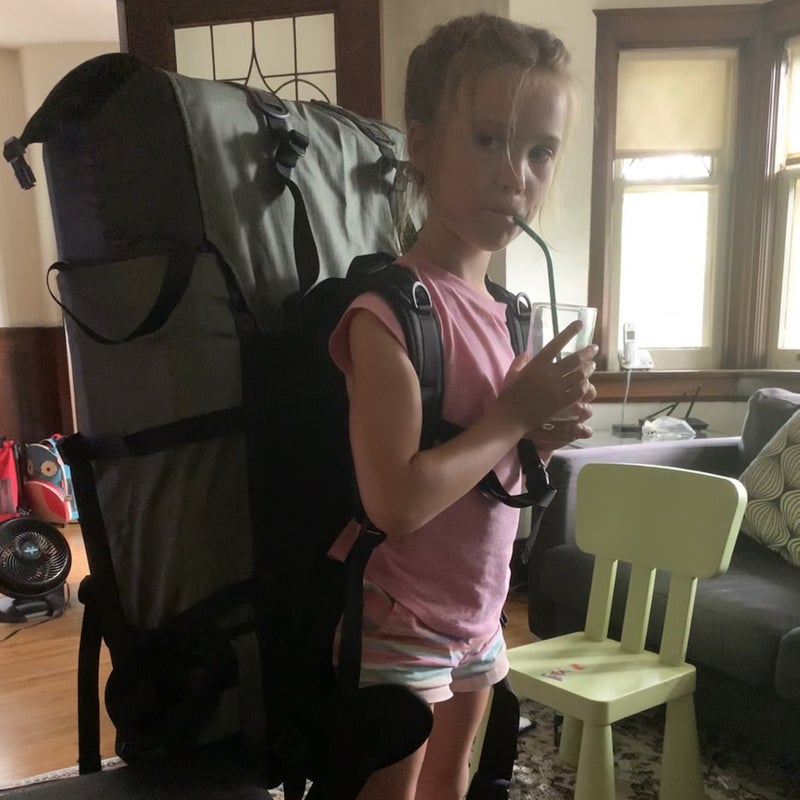
One of the reasons IÔÇÖm so excited about this is that, after years of borrowing MikeÔÇÖs tubs, I finally got my own this summer. And╠²from the same place Mike did: SchefflerÔÇÖs Deli in TorontoÔÇÖs St. Lawrence Market. I donÔÇÖt have any specific sources in other cities, but IÔÇÖve noticed several other Greek delis using them, and another friend of mine got some from a Greek restaurant. TheyÔÇÖre out there if you look. I happened to email SchefflerÔÇÖs right before they were going to be disposing of some, and they put aside eight empties for me. It took some work to wash out the olive smell (one round of dish detergent, one round of baking soda), but I got it done, and IÔÇÖm thrilled.
The details: my tubs held . IÔÇÖve also seen the same tubs advertised as ╠²(about 26.5 pounds), so it may depend on the type of olive. They have a square base, which is important for optimal packing. Some of the ones my other friend╠²got were round, which wastes space. IÔÇÖll finish by saying this: when I was searching for empty tubs, I saw that for 67 Canadian dollars ($50).╠²If SchefflerÔÇÖs hadnÔÇÖt hooked me up with empties, IÔÇÖd be eating three meals of olives a day right nowÔÇöand for the rest of the yearÔÇöwith no regrets.
So there you have it. You might look at these tips and think, Man, a canoe trip with that guy sounds like a complete nightmare. ItÔÇÖs supposed to be a vacation!╠²Or you might not. If itÔÇÖs the latter, I hope this advice helps╠²you get a little farther from the madding crowd. Good luck, and (donÔÇÖt take this personally) letÔÇÖs hope we donÔÇÖt see each out there.
For more Sweat Science, join me on and , sign up for the , and check out my book .


